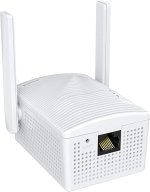NoTrespassing
Elite Member
Email received yesterday evening;
Due to excessive levels of inflation, the price of the Starlink kit is increasing from $499 to $549 for deposit holders, and $599 for all new orders, effective today. In addition, the Starlink monthly service price will increase from $99 to $110 .
The sole purpose of these adjustments is to keep pace with rising inflation. As Starlink expands service in your area, you will be emailed when your Starlink is ready and you will have 7 days to finalize your order. You can cancel your deposit for a full refund at any time in your account page .
Since launching our public beta service in October 2020, the Starlink team has tripled the number of satellites in orbit, quadrupled the number of ground stations and made continuous improvements to our network. Going forward, users can expect Starlink to maintain its cadence of continuous network improvements as well as new feature additions.
Thank you for being a Starlink customer and your continued support!
The Starlink Team
Due to excessive levels of inflation, the price of the Starlink kit is increasing from $499 to $549 for deposit holders, and $599 for all new orders, effective today. In addition, the Starlink monthly service price will increase from $99 to $110 .
The sole purpose of these adjustments is to keep pace with rising inflation. As Starlink expands service in your area, you will be emailed when your Starlink is ready and you will have 7 days to finalize your order. You can cancel your deposit for a full refund at any time in your account page .
Since launching our public beta service in October 2020, the Starlink team has tripled the number of satellites in orbit, quadrupled the number of ground stations and made continuous improvements to our network. Going forward, users can expect Starlink to maintain its cadence of continuous network improvements as well as new feature additions.
Thank you for being a Starlink customer and your continued support!
The Starlink Team
